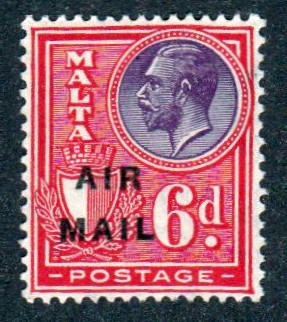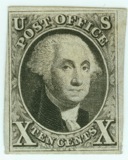
Discussion - Member to Member Sales - Research Center

Discussion - Member to Member Sales - Research Center

Is there another way to distinguish the printings, whiter paper perhaps?
I was using Ronsinol in a black tray, do the specialist fluids make it easier?
Any thoughts or suggestions?
Vic

Login to Like
this post
When I get the time, I'll look into this further. I seem to recall that different paper thicknesses were used in one of the issues. In addition, both PVA and gum arabic were used; PVA should be whiter.
It is possible that the thicker paper may be the problematic ones. If that is so, then maybe that will indicate which watermark would have been used. But then again, little is straight forward with Hong Kong QEII watermarks.

Login to Like
this post
Thanks Ningpo, it was the 1962/68 and 1973/75 issues that gave me the most problem and I think it was actually the thinner paper that was hardest to determine.
Possibly because it was so thin?
Vic.

Login to Like
this post
I'm afraid there is no 'formula' that can be used to differentiate between the two watermarks, based on paper thickness or gum.
The later printings between 1968 and 1973 are actually a complete mess. This can be partly attributed to the printers, who at one stage printed both upright and sideways watermarked papers in the same print runs.
The change to PVA gum from gum arabic began in September 1968, starting with the $2 reprint. It would seem that all values changed over by March 1970.
Printings from February 1970 used a much whiter, wood free paper. This is supposedly quite noticeable and gave a sharper printing image.
Just prior to this, "some values" were printed on thicker paper (from 0.00375 inch to 0.0048 inch).
Then in 1971, glazed papers were introduced but this was done in stages; the $10 of course being extremely scarce in both mint and used state.
From 1968 there were seven separate changes in watermark, gum and paper resulting in 80 variations of those three changes on seventeen values, plus a further 18 varieties of inverted and reversed watermarks.
Now that's a specialist collector's field if ever there was one!

Login to Like
this post
Thanks for the comprehensive answer, guess I'll stick with the ones I can identify and purchase to fill in the gaps where necessary.
Thought at first I was doing something wrong or had gone blind without realizing. Maybe next time I'll set up the camera and photograph the tray and study them on screen later where I can enlarge if needed.
Thank you again.
vic

Login to Like
this post
Vic,
If you have an anglepoise lamp, try holding the stamp with tongs close to it and move the stamp to different angles. This can work but not always.

Login to Like
this post

12:35:33pm
" ... Possibly because it was so thin? ..."
I'd say probably thinness contributes to the problem you encountered.
Watermarks are created by affixing an emblem or symbol to the dandy roll screen when the paper is compressed during the end stage of the manufacturing process.
Where there is a watermark, the paper will be consequently even thinner.
The thickness of the water mark can only be a small percentage of the thickness of the paper. Thus the thickness of the watermark pressed into thicker paper can be slightly thicker and easier to see.
Of course there could also be other factors pertaining to the material the paper is constructed from.

Login to Like
this post
"Of course there could also be other factors pertaining to the material the paper is constructed from."
This seems to be true. Not so much on the issues Sheepshanks mentioned but on some of the coloured paper issues from KGV. In particular, the two watermark types on the Hong Kong overprinted with CHINA series:
The 50 cent on emerald paper and the $1 on blue paper using the later Script watermark (1922-27) are almost impossible to detect. This leads me to wonder whether the paper pulp was different.
Perhaps this also applies to other Commonwealth countries that used the green, blue and yellow papers.

Login to Like
this post

Spent an hour yesterday trying to find watermarks on the earlier QE2 issues and while some were obvious had great difficulty with the sideways watermarks. Some that should have had upright or sideways just could not be seen.
Is there another way to distinguish the printings, whiter paper perhaps?
I was using Ronsinol in a black tray, do the specialist fluids make it easier?
Any thoughts or suggestions?
Vic

Login to Like
this post

re: Hong Kong watermarks
When I get the time, I'll look into this further. I seem to recall that different paper thicknesses were used in one of the issues. In addition, both PVA and gum arabic were used; PVA should be whiter.
It is possible that the thicker paper may be the problematic ones. If that is so, then maybe that will indicate which watermark would have been used. But then again, little is straight forward with Hong Kong QEII watermarks.

Login to Like
this post

re: Hong Kong watermarks
Thanks Ningpo, it was the 1962/68 and 1973/75 issues that gave me the most problem and I think it was actually the thinner paper that was hardest to determine.
Possibly because it was so thin?
Vic.

Login to Like
this post

re: Hong Kong watermarks
I'm afraid there is no 'formula' that can be used to differentiate between the two watermarks, based on paper thickness or gum.
The later printings between 1968 and 1973 are actually a complete mess. This can be partly attributed to the printers, who at one stage printed both upright and sideways watermarked papers in the same print runs.
The change to PVA gum from gum arabic began in September 1968, starting with the $2 reprint. It would seem that all values changed over by March 1970.
Printings from February 1970 used a much whiter, wood free paper. This is supposedly quite noticeable and gave a sharper printing image.
Just prior to this, "some values" were printed on thicker paper (from 0.00375 inch to 0.0048 inch).
Then in 1971, glazed papers were introduced but this was done in stages; the $10 of course being extremely scarce in both mint and used state.
From 1968 there were seven separate changes in watermark, gum and paper resulting in 80 variations of those three changes on seventeen values, plus a further 18 varieties of inverted and reversed watermarks.
Now that's a specialist collector's field if ever there was one!

Login to Like
this post

re: Hong Kong watermarks
Thanks for the comprehensive answer, guess I'll stick with the ones I can identify and purchase to fill in the gaps where necessary.
Thought at first I was doing something wrong or had gone blind without realizing. Maybe next time I'll set up the camera and photograph the tray and study them on screen later where I can enlarge if needed.
Thank you again.
vic

Login to Like
this post

re: Hong Kong watermarks
Vic,
If you have an anglepoise lamp, try holding the stamp with tongs close to it and move the stamp to different angles. This can work but not always.

Login to Like
this post
Silence in the face of adversity is the father of complicity and collusion, the first cousins of conspiracy..
19 Oct 2015
12:35:33pm
re: Hong Kong watermarks
" ... Possibly because it was so thin? ..."
I'd say probably thinness contributes to the problem you encountered.
Watermarks are created by affixing an emblem or symbol to the dandy roll screen when the paper is compressed during the end stage of the manufacturing process.
Where there is a watermark, the paper will be consequently even thinner.
The thickness of the water mark can only be a small percentage of the thickness of the paper. Thus the thickness of the watermark pressed into thicker paper can be slightly thicker and easier to see.
Of course there could also be other factors pertaining to the material the paper is constructed from.

Login to Like
this post

re: Hong Kong watermarks
"Of course there could also be other factors pertaining to the material the paper is constructed from."
This seems to be true. Not so much on the issues Sheepshanks mentioned but on some of the coloured paper issues from KGV. In particular, the two watermark types on the Hong Kong overprinted with CHINA series:
The 50 cent on emerald paper and the $1 on blue paper using the later Script watermark (1922-27) are almost impossible to detect. This leads me to wonder whether the paper pulp was different.
Perhaps this also applies to other Commonwealth countries that used the green, blue and yellow papers.

Login to Like
this post

